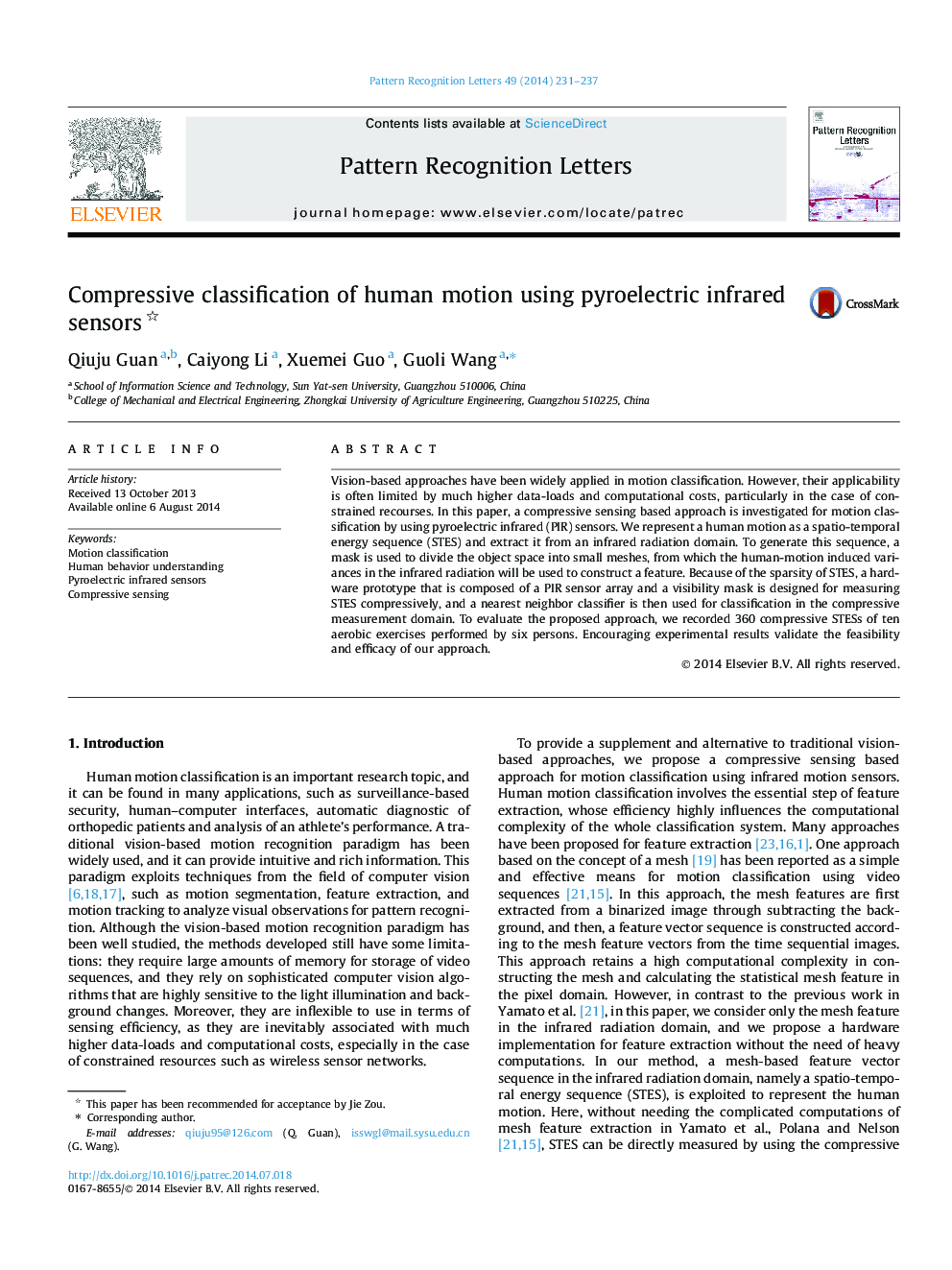| Article ID | Journal | Published Year | Pages | File Type |
|---|---|---|---|---|
| 535356 | Pattern Recognition Letters | 2014 | 7 Pages |
•Designed a mesh-based feature extraction method for the infrared radiation domain.•Developed a motion classification system by using a hardware architecture.•Validated a compressive classification scheme for human motion with experiments.
Vision-based approaches have been widely applied in motion classification. However, their applicability is often limited by much higher data-loads and computational costs, particularly in the case of constrained recourses. In this paper, a compressive sensing based approach is investigated for motion classification by using pyroelectric infrared (PIR) sensors. We represent a human motion as a spatio-temporal energy sequence (STES) and extract it from an infrared radiation domain. To generate this sequence, a mask is used to divide the object space into small meshes, from which the human-motion induced variances in the infrared radiation will be used to construct a feature. Because of the sparsity of STES, a hardware prototype that is composed of a PIR sensor array and a visibility mask is designed for measuring STES compressively, and a nearest neighbor classifier is then used for classification in the compressive measurement domain. To evaluate the proposed approach, we recorded 360 compressive STESs of ten aerobic exercises performed by six persons. Encouraging experimental results validate the feasibility and efficacy of our approach.
